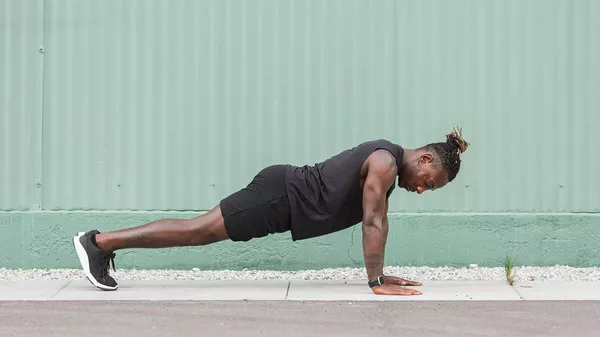In the modern age of technology, our bodies are adapting to sedentary lifestyles, prolonged screen time, and repetitive daily habits. These shifts in how we work and move have given rise to one common issue: poor posture. Many people unconsciously hunch their shoulders, tilt their heads forward, and round their backs throughout the day. These positions may seem harmless, but over time, they can lead to chronic pain, reduced mobility, and even long-term spinal problems. The good news is that posture can be corrected with the right exercises—ones that are simple, consistent, and highly effective.
Posture refers to the way we hold our bodies while sitting, standing, and moving. Proper posture keeps our bones, joints, and muscles aligned in a way that minimizes strain and maximizes efficiency. When posture is compromised, our muscles overcompensate, certain joints bear more weight than they should, and the body begins to function less efficiently. This article explores a wide range of exercises that can be integrated into everyday routines to gradually restore and maintain healthy posture. Whether you spend your day at a desk or on your feet, improving posture through exercise is one of the best investments you can make in your long-term health and well-being.
Why Exercise Is Essential for Good Posture
Posture isn’t only about standing up straight. It reflects the health of your musculoskeletal system. Good posture depends on strong, flexible, and balanced muscles that support the spine and surrounding joints. Weak muscles can cause the body to collapse into poor alignment, while overly tight muscles can pull it out of balance. Over time, these imbalances cause stress on the spine and may lead to discomfort or injury.
Regular exercise helps restore balance by strengthening weak muscles and stretching tight ones. It also improves body awareness, helping you recognize and correct poor alignment. Unlike a posture corrector device or brace, exercise empowers the body to hold itself upright using its own strength. This creates a lasting change in how the body functions, rather than a temporary fix.
Even better, the benefits of posture-corrective exercise extend beyond physical appearance. Better posture can lead to improved breathing, reduced fatigue, enhanced confidence, and fewer aches and pains. Whether you’re looking to relieve discomfort, enhance your athletic performance, or simply stand taller, posture-focused movement can provide profound results.
Start with Awareness and Body Connection
Before diving into exercises, it’s important to develop body awareness. Many posture problems begin because we simply don’t notice how we’re holding ourselves. Building a connection between your mind and body is the foundation for lasting change.
Begin by standing in front of a mirror and observing your posture. Are your shoulders level? Is your head aligned with your spine or jutting forward? Do your hips tilt excessively? Try to stand in a neutral position: ears over shoulders, shoulders over hips, hips over knees, and knees over ankles. This position allows your muscles and joints to function properly without excessive tension.
You can also perform a body scan a few times each day. Close your eyes, stand or sit upright, and mentally check in with your body from head to toe. This helps reinforce the habit of noticing and correcting poor posture, even before it becomes a problem.
Core-Strengthening Exercises to Stabilize the Spine
Your core is the powerhouse of posture. It includes not just your abdominal muscles but also your back, sides, pelvic floor, and diaphragm. A strong core stabilizes the spine and pelvis, helping you maintain proper alignment whether sitting, standing, or moving.
Start with basic exercises that target deep core muscles. The plank is one of the most effective movements. Begin with a forearm plank, keeping your body in a straight line and engaging your stomach muscles. Hold the position without sagging or arching your back. Other beneficial movements include dead bugs, bridges, and bird-dogs, which encourage core engagement and spinal control.
Pilates is another excellent method for core strength. It focuses on small, controlled movements and breath work, training your core muscles to fire properly. Consistent practice can lead to noticeable improvements in posture and movement efficiency within a few weeks.
Mobilize the Spine for Flexibility and Alignment
A healthy spine needs to move. Unfortunately, hours spent sitting can stiffen the back and reduce flexibility. This lack of mobility often contributes to poor posture, especially in the thoracic (mid-back) region, which is prone to becoming rounded.
To improve mobility, practice exercises that move the spine through its full range of motion. The cat-cow stretch is a great starting point. Move between arching your back (cow) and rounding it (cat), synchronizing with your breath. This motion loosens the spine and promotes better posture.
Another useful movement is the thoracic rotation. Sit upright or kneel on all fours, and gently twist your upper back side to side. This improves spinal rotation and helps counteract stiffness caused by sitting or slouching. Even lying on your back and gently hugging your knees to your chest can help release tension in the lower spine.
Spinal mobility exercises are low-impact and suitable for almost everyone. When practiced regularly, they restore flexibility and encourage the spine to return to a natural, upright alignment.
Stretch the Chest and Front Body
One of the most common causes of poor posture is tightness in the front of the body. This includes the chest, shoulders, and hip flexors. These muscles tend to shorten when you spend a lot of time sitting or working at a desk, pulling your body forward into a hunched position.
Chest stretches help counteract this effect. Stand in a doorway, place your arms on the frame, and gently lean forward until you feel a stretch across your chest. Hold the position for 20–30 seconds and repeat a few times. You can also stretch your arms behind your back and lift them slightly to open up the chest.
Don’t forget the hip flexors. Kneeling lunges and pigeon pose are excellent for releasing tight hips. When your hips are open and flexible, your pelvis can align properly, reducing strain on your lower back and improving your overall posture.
Stretching should be done consistently but gently. Never force your body into a position. Over time, your muscles will lengthen and allow for more natural posture without resistance.
Strengthen the Upper Back and Shoulder Muscles
The muscles between your shoulder blades and along the upper spine are often neglected, yet they play a key role in holding your shoulders back and your spine upright. Weakness in this area can lead to a rounded upper back and a forward head posture.
Strengthening exercises should focus on the rhomboids, trapezius, and posterior deltoids. Rows, either with dumbbells or resistance bands, are effective for targeting these muscles. Face pulls, reverse flys, and wall angels also promote better shoulder stability and upper back strength.
Proper form is essential. Use controlled, slow movements and avoid using momentum. Focus on squeezing the shoulder blades together at the top of each repetition. Over time, these muscles will become more active in daily life, naturally pulling your posture into alignment.
Activate the Glutes and Legs for a Solid Base
Posture isn’t just about your back and shoulders. The lower body provides the foundation for the rest of your posture. Weak glutes and tight hamstrings or hip flexors can cause your pelvis to tilt and your spine to misalign.
Exercises like squats, lunges, and glute bridges help strengthen the muscles of the hips and legs. A strong lower body supports the pelvis and allows you to stand tall with less effort. When your base is strong and stable, your entire posture benefits.
It’s also helpful to stretch the hamstrings and calves, especially if you spend a lot of time sitting. Tightness in the back of the legs can pull on the pelvis and lead to poor posture. Regular stretching and strengthening create balance throughout the lower body, allowing the spine to remain upright and neutral.
Practice Daily Habits That Reinforce Good Posture
Exercise alone won’t correct posture if your daily habits continue to reinforce poor movement patterns. That’s why it’s important to bring awareness to how you sit, stand, and move throughout the day.
Start by adjusting your workstation. Your screen should be at eye level, your chair should support your lower back, and your feet should rest flat on the ground. Avoid slouching or crossing your legs for long periods. Take breaks every 30–60 minutes to stand, stretch, or walk.
When walking, engage your core and keep your head level. Roll your shoulders back and allow your arms to swing naturally. Even when relaxing, try to lie on your back with a small pillow under your knees to encourage spinal alignment.
Small habits make a big difference. With time and repetition, these conscious movements become automatic, leading to lasting improvements in your posture and overall well-being.
Combine Movement and Mindfulness for Long-Term Change
Improving posture is not about perfection. It’s about building awareness and making small, consistent changes that add up over time. Movement practices that combine physical activity with mindfulness, such as yoga, tai chi, and Feldenkrais, can be particularly effective.
Yoga poses like mountain pose, downward dog, and cobra promote alignment, strength, and awareness. Tai chi encourages fluid movement and balance, helping the body find a natural center. Feldenkrais uses gentle, exploratory movements to retrain the brain’s relationship with posture and motion.
These methods emphasize presence and attention. They teach you to move with purpose, listen to your body, and maintain alignment without force. For many people, combining mindfulness with movement becomes a powerful and sustainable way to improve posture from the inside out.
Conclusion
Posture is more than an aesthetic concern—it’s a reflection of how your body functions. By integrating posture-corrective exercises into your routine, you can improve strength, mobility, and balance throughout your entire body. From core engagement to spinal mobility, chest stretching to upper back strengthening, each element contributes to a more upright and comfortable way of moving through the world.
Improving posture takes time and patience, but the rewards are immense. You’ll feel less tension, breathe more easily, and move more freely. With each mindful repetition, you are reshaping your body to support a healthier, more confident version of yourself.
Related Topics

































